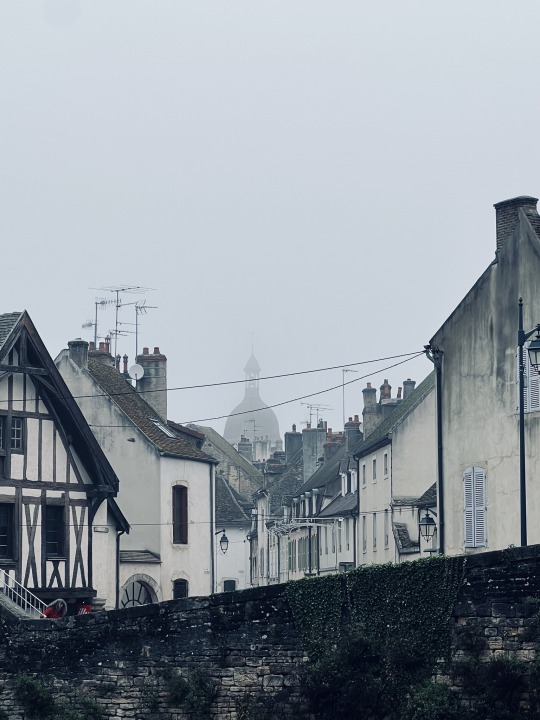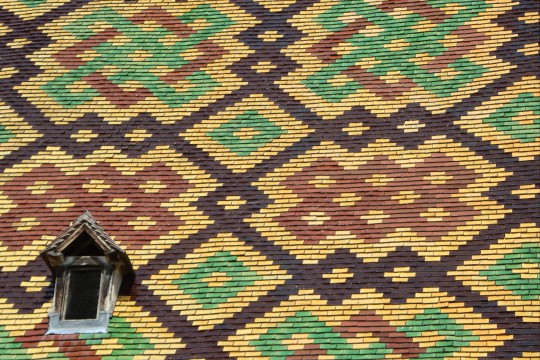#beaune
Text
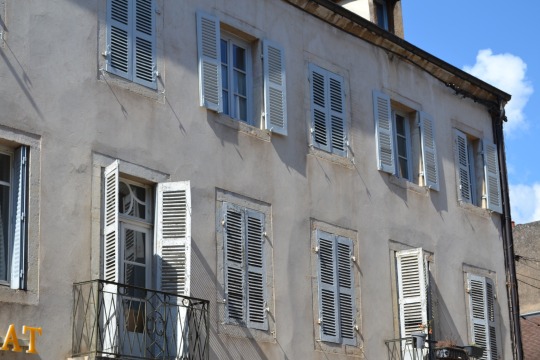
Open the shutters; do not be afraid to let the light in.
#quotes#spilled ink#photoblr#original content#europe#travel#france#beaune#architecture#dark academia#light academia#cottagecore
20 notes
·
View notes
Text

Mechanical and Electrical Laboratory of the American University in Beaune, Burgundy region of France
French vintage postcard
#old#postcard#mechanical and electrical laboratory#postkaart#university#electrical#the american university#french#vintage#beaune#briefkaart#american#postal#ansichtskarte#laboratory#ephemera#photography#photo#mechanical#postkarte#tarjeta#france#historic#sepia#carte postale
5 notes
·
View notes
Text

Beaune
© David Durand 2023 - Website
#original photographers#photographers on tumblr#fujifilm#france#photography#landscape#monochrome#black and white#trees#beaune
10 notes
·
View notes
Photo
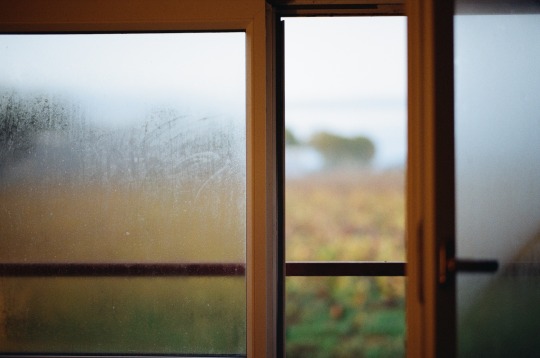
#travel#vacation#france#bourgogne#burgundy#beaune#Leica#Leica M6#50mm summilux#Kodak Gold 200#35mm film#analog#color#landscape#window#hotel room#looking out#foggy#field#vineyard#fall#october#morning
51 notes
·
View notes
Text
🍷♥️🇫🇷 les jeux sont faits
#pinot noir#france#bourgogne#beaune#premier cru wine cellars#wineglass#vino#winelover#winepic#winetasting#red wine#wineoclock#sommelier#sommlife#chambertin#grand cru#clodsevougeot#faiveley
15 notes
·
View notes
Text

#ian somerhalder#comic con#the vampire diaries#adoring fan#tvd#Ian's other roles#lost#damon salvatore#beaune#Photo op comic con Scotland#V
5 notes
·
View notes
Photo

Bruno Latour, 1947-2022
#Bruno Latour#Latour#1947#2022#2020's#2000's#1940's#1900's#France#French#sociology#anthropology#philosophy#constructivism#Beaune#Paris#Côte-d'Or#Cote-d'Or
18 notes
·
View notes
Text
Rogier and Campin: Mistaken Identities
Connoisseurship, by its nature, will often involve mistaken identity, work by one artist being taken for that of another. This Study looks at a case that can be illustrated by work attributable to two famous fifteenth centruy artists, Rogier van der Weyden and Robert Campin, within one collection, that of the London National Gallery, and the relation of these pictures to others elsewhere.

When juxtaposed, it is easy to see the similarities between faces in Rogier's Altarpiece at Beaune and portraits in the National Gallery, attributed to Campin. Such a degree of likeness makes it hard to see how there could be disagreement that they were all painted by the same hand. Stylistically, everything corresponds, even the craquelure
In the above juxtaposition, the left-hand face of each pair is a face out of the Beaune Altarpiece, the Last Judgment, still at Beaune in Burgundy, that everyone seems agreed is the work of Rogier van der Weyden. The right-hand face of each pair is of the Man and Woman, respectively, portrayed in two separate panels at the London National Gallery where they are ascribed, not to Rogier, but to Robert Campin. The two artists were famous in their day for the outstanding quality of their work, and they both presided over large workshops.
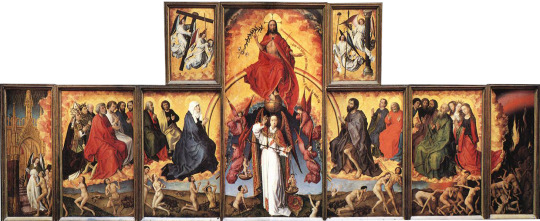
The Altarpiece at the Hotel-Dieu, Beaune. Open, it shows The Last Judgement

Closed, the polyptych shows the donors kneeling before statues of saints
Here is another Portrait of a Man that can also be seen at the National Gallery. It is the portrait of a known person, Alexander Mornauer.

Portrait of Alexander Mornauer, attributed to "the Master of the Mornauer portrait", National Gallery, London

The Mornauer portrait before cleaning, showing a 'Holbein blue background, and reworking of the hat
He was given a plain blue ‘Holbein’ background that has been removed, as being a later addition, to reveal one that is of much more interesting texture and of a sort of puce colour. The painter of this picture is simply called ‘The Master of the Mornauer Portrait’, thought to be from ‘South Germany’.
If we now place this Mornauer portrait between two other images, the Portrait of a Stout Man from the Thyssen Collection in Madrid (ascribed to Robert Campin) and the two onlookers beside the Bad Thief to the Left of Christ from the panel at Frankfurt (Staedel Institut), generally considered a work by Campin, do we not see similarities, in this second case, nearly as compelling as the very different similarities in the first?

Left to Right: The Mornauer Portrait; Portrait of a Stout Man, attrib. Campin, Museo Thyssen, Madrid; detail and full image of The Bad Thief to the Left of Christ, attrib. Campin, Staedel Museum, Frankfurt
The Mornauer portrait clearly predates both the Thyssen Head of a Man and the Frankfurt Crucifixion, which one takes to be late work by the artist; that said, we can see an earlier manifestation of the same extraordinarily bold facial modelling, the same eyes and eyebrows, the same fine brushwork in the brown hair and the hairs of fur, and, in the detail of the two onlookers to the Crucifixion, very similar and distinctive hands displaying all their veins and joint-creases.
Much work remains to be done on the oeuvres of two men who were clearly the stars of the generation after the Van Eycks, but what these comparisons already suggest is that their styles are very distinct from each other. It appears that two portraits have got linked with Robert Campin when they are much more likely to be by Rogier van der Weyden, and a fine work by Campin in the same Gallery has gone unrecognised, relegated to ‘South Germany’. There is evidence here of the muddle that surrounds these two names.
I do not believe that we have many works anywhere by Robert Campin, but what there is strikes me as of remarkably high quality. His hyper-realism may not appeal to all tastes today, but it belongs to its time and makes a superlative link between Jan van Eyck and Dürer in the tradition that leads on to Holbein, and eventually Ingres. Of work by Rogier van der Weyden we have more, including two masterpieces, the Beaune Altarpiece and the Madrid Deposition, but his work likewise has to be distinguished from that of numerous artists of his time, mostly of lesser talent, who spent their careers in workshops such as those headed by himself and Campin.

Left to RIght: The Mornauer Portrait; Portrait of a Man, attributed to the same artist, Kupferstichkabinett, Berlin; in BW; Reflectogram of the Mornauer Portrait, revealing the same style of folds in the clothing and vein details in the hands
I wish to draw attention at this point to two drawings. The first is a portrait of a man of middle age with black curly hair, wearing a hat and holding his hands together with the two thumbs abutted. This remarkable image is held at the Kupferstichkabinett in Berlin and attributed to the same hand as the Mornauer. The penmanship in the modelling of the man’s shirt is superlative and the vividness of his presence is all the greater for the addition of watercolour to his face, neck and hands.
The connection, as I see it, with Campin is made by a very helpful infrared reflectogram of the Mornauer portrait in a publication (2010) by the National Gallery, entitled A Closer Look: Deceptions and Discoveries. The underdrawing of that painting is so close to the treatment of the folds in the sleeves of the shirt in the drawing that I think it very likely that they are by the same artist. Note the veins in the hands of both painting and drawing; Dürer could not have observed them better.
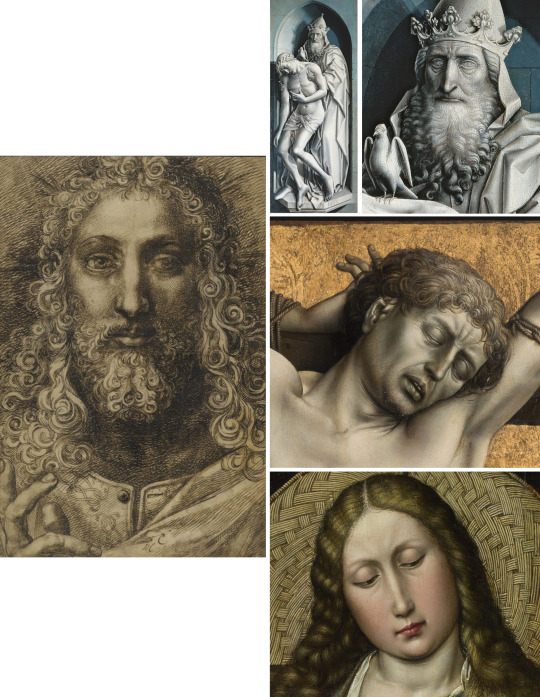
Left: 'Le Christ Bénissant', attrib. Toussaint Dubreuil, the Louvre; Right from Top: Detail from Campin's Throne of Mercy; Detail from Campin's Bad Thief; Detail from Campin's Madonna by a Firescreen, National Gallery, London
The second drawing - an image at the Louvre entitled Christ Blessing - I also think is by Campin, though probably from a different period of his career. Here the penmanship is bolder and looser than in the drawing just mentioned, but the dense cross-hatching and other mark-making is very similar. Below are some juxtapositions that help to link this drawing with the Mornauer portrait and other Campins in the treatment of facial features, hands and hair-curls.

Left to Right: Faces of Mornauer; Christ; the Stout Man

Hair and fingers from the Bad Thief (left) and Christ Bénissant (right)
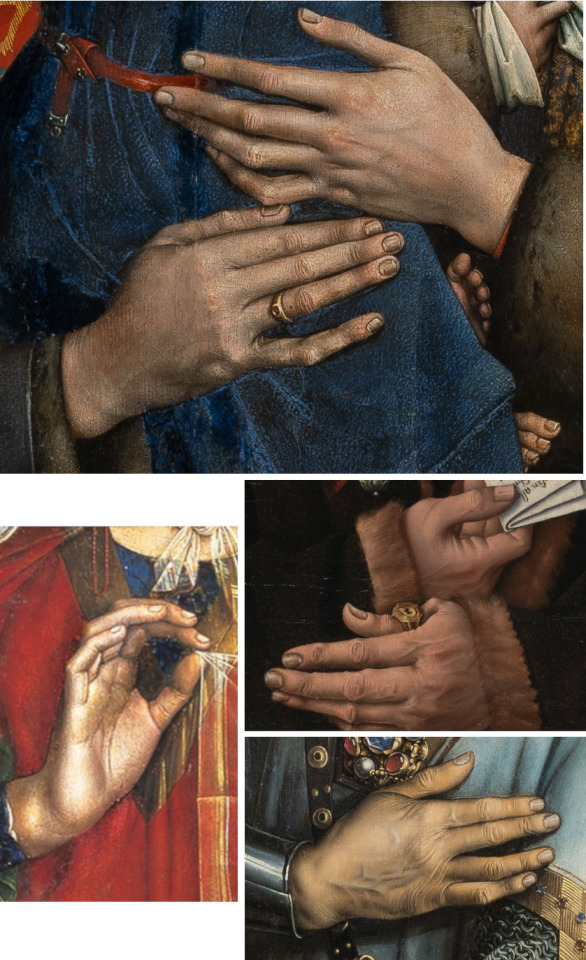
Hand details: VIrgin and Child, Campin (top); Saint Veronica, Campin (left) both Staedl Museum, Frankfurt; The Mornauer (middle); The Bad Thief (bottom)
That two paintings by Rogier van der Weyden can be taken for work by Campin when the two artists are so completely different is concerning. The focus of the present Study has been limited to three paintings in the London National Gallery, the stylistic connection of two of them, the paired portraits of A Man and A Woman, with Rogier’s Beaune Altarpiece, and a third, the Mornauer Portrait, with Crucifixion and other panels at Frankfurt. On the evidence even of these few works we can see Campin as a master capable of projecting a very powerful image with hyper-realistic attention to texture and fine detail. The Rogier portraits are realistic too, but less forceful and arguably more sympathetic depictions of individuals with faces easily associated as those of husband and wife.
Clearly there is scope for a wider discussion of the oeuvres of these two very important painters. I hope a future Study can attempt to address that much more complex issue
#campin#rogier#rogier van der weyden#beaune#Dutch Painter#painting#connoisseur#connoisseurship#studies in connoisseurship#art history
2 notes
·
View notes
Text

Beaune, France ✨
“La vie est trop courte pour boire du mauvais vin.”
—Johann Wolfgang von Goethe
(Translation: Life is too short to drink bad wine.)
Remembering France… ✨🇫🇷
#France#beaune#my travels#wine#French wine#things I love#places I love#remembering France#my photos#my photography#quotes#words to live by
16 notes
·
View notes
Text

Folklore garment from Bessans, Savoy region of France
French vintage postcard, mailed in 1904 to Beaune
#vintage#folklore#tarjeta#bessans#france#briefkaart#postcard#beaune#photography#1904#region#postal#garment#carte postale#sepia#ephemera#historic#savoy#french#ansichtskarte#postkarte#postkaart#mailed#photo
2 notes
·
View notes
Text

March 19, 2024
#france#frankrijk#beaune#vrede#werken#avondwandeling#vakantie#onderweg#met de liefste#met jos#spanje
0 notes
Photo

#travel#vacation#france#bourgogne#burgundy#beaune#Leica#Leica M6#50mm summilux#Kodak Gold 200#35mm film#analog#color#cityscape#streetphotography#facade#light#shadow#stone#chimney#blue sky#fall#october#morning
16 notes
·
View notes
Text
Galileo Wine & Spirits Portfolio Wine Tasting
Galileo Wine & Spirits Portfolio Wine Tasting. Quality Italian and French wines.
@GalileoWine @zenatowinery @DelamainCognac @vignamaggio #Chianti #Valpolicella #Amarone #Bordeaux #cognac
If you are a lover of French and Italian wines, then you should love the portfolio of wines from Galileo Wine & Spirits. There were so many excellent wines to choose from. Here are a few of the wines that I really appreciated.
My Wine Tasting Notes
Chateau de Fuisse Macon-Village 2022, France – A medium lemon colour. Fresh, medium-intensity stone fruit nose. Medium plus body, dry with a round,…

View On WordPress
#Avignonesi#Beaune#Brunello di Montalcino#cabernet sauvignon#Chateau Clos des Menuts#Chateau de Callac#Chateau de Fuisse#Chateau Lalande#Chianti#Delamain#Domaine Jacques Prieur#france#Galileo Wine & Spirits#Graves#italy#Lugana#Maison Riviere Fils#merlot#portfolio#Recioto#Sangiovese#St. Emilion#Tuscany#Valpolicella#Villa Poggio Salvi#Villa Vignamaggio#Zenato
0 notes
